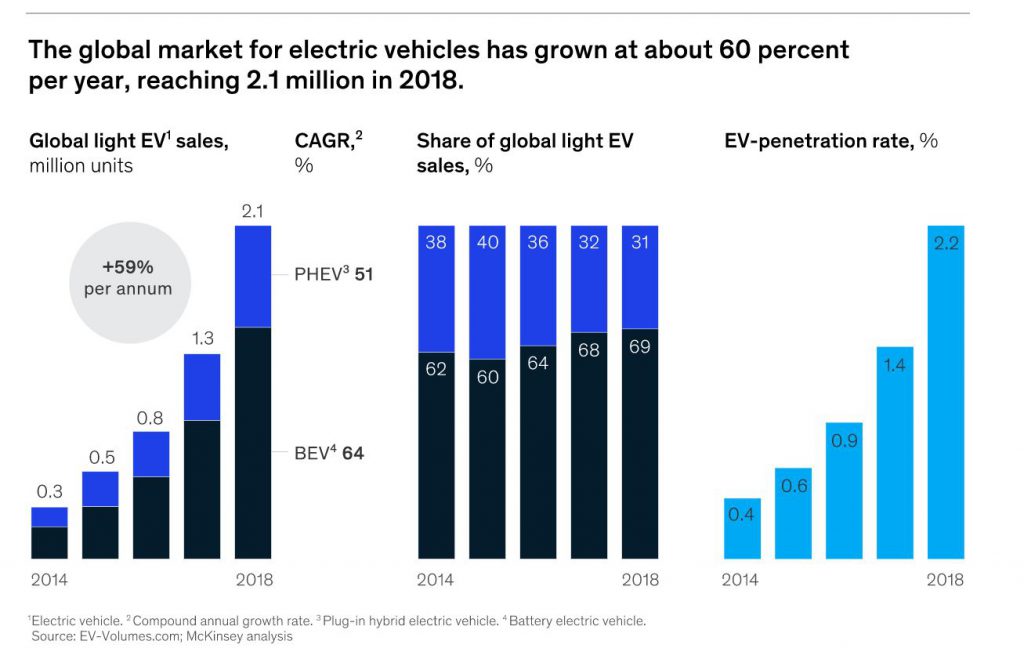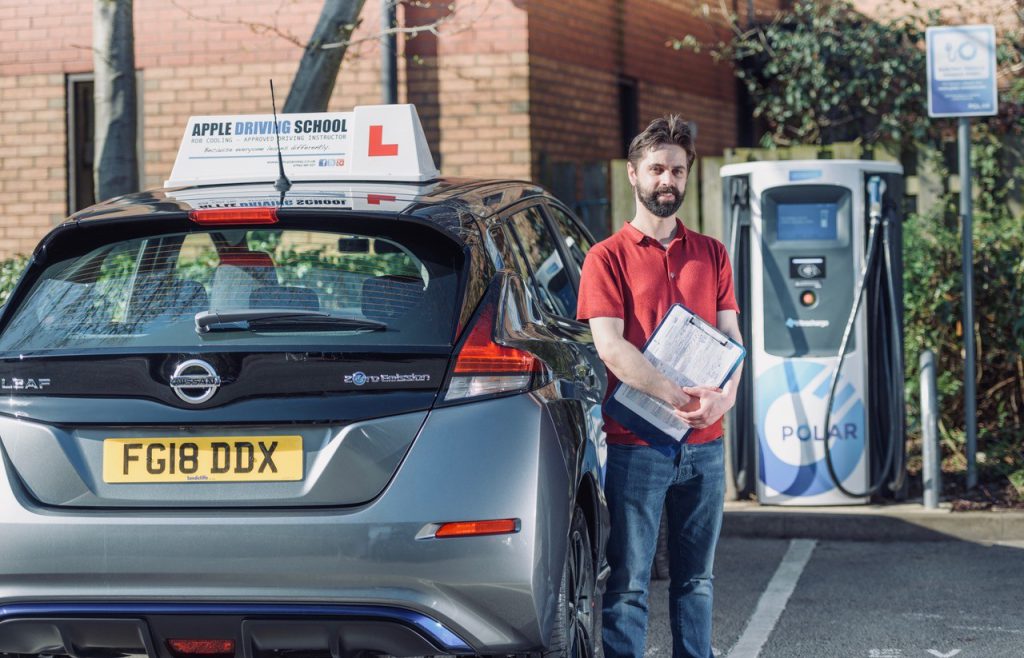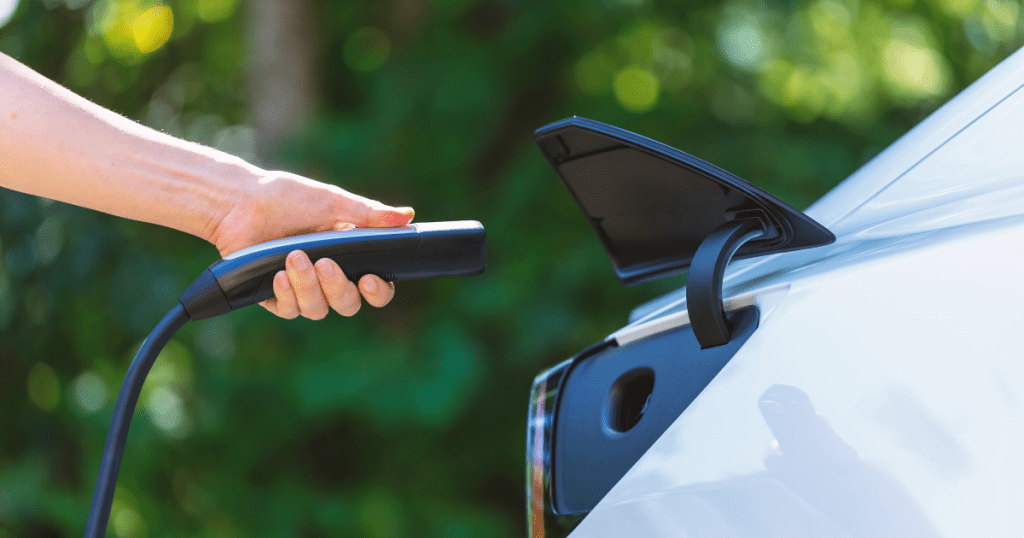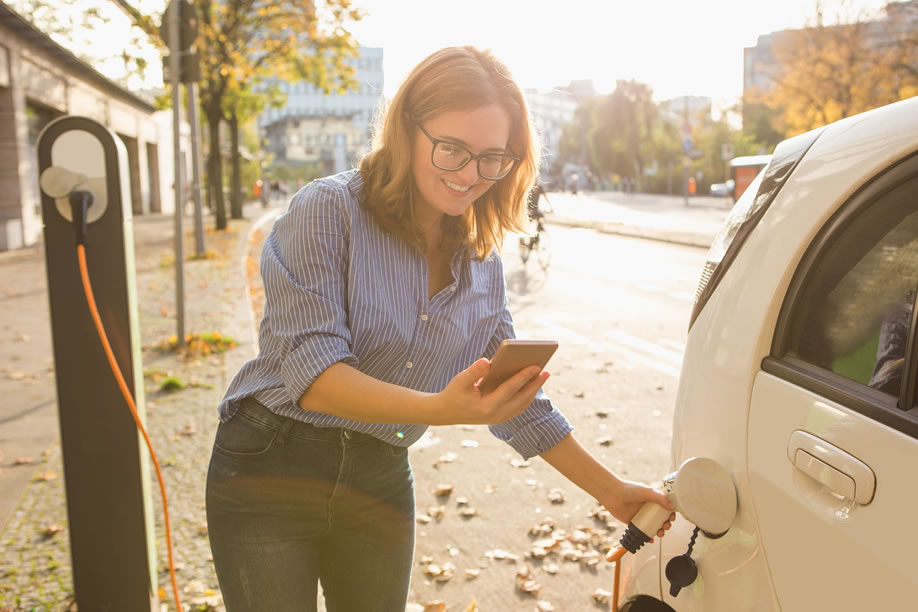Last Updated on November 20, 2024
It’s no surprise that the use of electric vehicles (EV’s) has increased in recent years. Research from Mckinsey and Company shows the steep growth in use of EV’s since 2014.

Furthermore, research conducted by The Society of Motor Manufacturers and Traders (SMMT), shows that between 2018 and 2019 alone, there was a 144% increase in sales of battery powered vehicles.

With the rapid growth in sales of EV’s, it’s only natural to expect driving instructors to consider teaching learner drivers with an electric vehicle and for learner drivers themselves to be curious. In this article we interview Rob Cooling of Apple Driving School, where learners can learn to drive in an EV.


What Differences Can Learners Expect Between an EV and a Car With a Regular Combustion Engine?
EV’s have the advantage of clean acceleration unbroken by gear changes and they are very responsive. When switching to combustion, pupils might notice the lag and interrupted acceleration but again, these are just sensation issues. 95% of driving is about what happens outside the windows such as planning, anticipation, interacting with other road users and these skills are the same no matter the vehicle.
What Would You Say To a Pupil Who is Sceptical About Learning to Drive in an EV?
They don’t have to learn in an EV, I would not push someone uncertain towards something they are not happy about unless they were actively seeking reassurance. Pupils book automatic driving lessons and the car just happens to be an EV, the pupil is learning auto not electric.
The automatic learner market is growing rapidly and most aren’t really that interested in the vehicle they are learning in. However, there is a small niche market of pupils who only want to learn in an electric car and will never drive combustion but that’s not mainstream.
Do Many of Your Pupils Go on to Own an EV?
Very few, most will buy a standard automatic and that’s fine. I’ve had 2 pupils this year go on to buy Nissan Leafs but that’s unusual. Interestingly one pointed out that when all you are ever used to is a 100 mile range then you don’t see it as a limitation because you have nothing to compare against. Nor is it a limitation when most people’s daily average mileage is 50 miles. Having said that, the new generation of EV’s achieve 200-300 miles per charge.

What Do You See As The Future For EV’s and Learner Drivers?
As we experience a technological and generational shift our industry will move gradually away from manual tuition across the next decade. Based on manufacturers self-set deadlines for electrification it is looking unlikely that the manual car will still be in mainstream production beyond the year 2030, the clutch is becoming technologically redundant.
It still currently makes more sense to learn manual to keep options open, but the concept that you NEED a manual licence in this new era is becoming increasingly archaic. For driving instructors, the ability to travel 100 miles for £1.50-£4 (dependent on energy tariff) massively reduces running costs and in the long term can make an EV the cheaper and more exciting option.
Quite often the lease cost of an EV added onto its electricity bill can be cheaper than the lease cost of a traditional car added onto its fuel bill, it’s quite impressive that you can get a better product for less money.
Authored by
Rob Cooling of Apple Driving School
Website Link
EV Driving Lessons

I’m an upbeat driving instructor co-organising the Nottingham EV Owners Club and running talks, presentations, Q&A’s and EV displays to provide realistic electric car education for the driver training industry.
Get a Learner Insurance Quote with Collingwood









